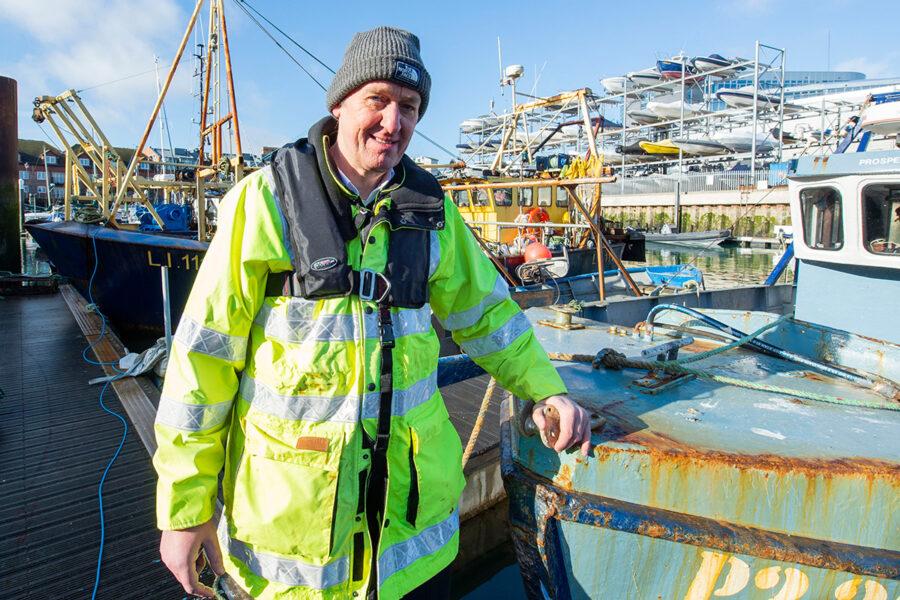Fears that the new Code of Practice for the Safety of Small Fishing Vessels will require changes that render vessels unsafe are often due to misunderstandings, writes the Maritime and Coastguard Agency fishing safety team
The Maritime and Coastguard Agency (MCA) is offering further clarity over the updated Code of Practice for the Safety of Small Fishing Vessels, following concerns over growing rumours and misconceptions around its implementation.
The Code came out in September 2021 after a lengthy consultation period that included a roadshow visiting over 40 venues. The MCA has engaged – and remains willing to engage – with the industry as the Code has experienced a ‘bedding in’ period. Surveyors have said the feedback received from fishers has been constructive and has helped to fine-tune inspections.
But it has become clear that a rumour has developed around concerns that vessels that do not meet the minimum requirements will be prevented from fishing again, or made to make changes that will render the vessel unsafe, for example fitting sumps or pumps – this is not the case, according to Dave Fenner, fishing safety lead at the MCA.
He said that, while it is true that sumps and pumps are an option, they are far from the only option.
It may not be known, Dave added, that vessels of 7m and over (registered length) that joined the register on or after 16 July, 2007 will already be accepted as compliant. However, that is contingent on there being no modifications or alterations; any modifications must be MCA-approved, and not impact the initial acceptance criteria based upon the relevant construction standard.
Vessels of less than 7m (registered length) joining after 16 July, 2007 must demonstrate that freeboard and water-freeing arrangements meet the construction standard. This may not have been assessed at build, but should still have met the standards in place, and therefore vessels may need to be brought into compliance with the standard.
Vessels that joined the register before 16 July, 2007 would need to demonstrate equivalence.
Owners of vessels that cannot meet requirements due to the nature of the vessel’s design, as changes would render the operation impractical, will be able to submit their own proposals for equivalency after seeking professional advice. They may even find that, when they do this, they are told their vessel will be accepted as it is, with no changes needed at all.
Dave said: “Submitting your own proposals is a really good way of identifying the arrangement that best suits your vessel. If you believe you have a solution that would fulfil the expectations of the Code and is to your satisfaction, then send them to us, so we can assess and then work with you to try to find a solution.
“Responsibility falls to the owner to ensure a vessel complies with the Code.”
The Code has been introduced following multiple Maritime Accident Investigation Branch (MAIB) reports into fatalities and vessel losses that detailed that the owners were not aware their vessel was at risk. The MAIB recommended that the MCA introduce requirements that set down limits for stability, freeboard and water-freeing arrangements, so that owners are aware and the risks of flooding and capsize are minimised.
This includes open vessels that are launched or recovered from a beach. The Code now determines that any drainage arrangement fitted to an open vessel should comply with the requirements of MSN 1871 (F). For open vessels, ‘elephant trunk’ type arrangements will not be accepted in isolation, as they will not drain if the vessel is stationary. As a minimum requirement, any large drain should be provided with a positive means of watertight closure.
To get acceptance for equivalent arrangements, vessel owners will need to complete a proposal for equivalence (MSF 1261), outlining how the vessel meets the alternative criterion. Forms – to propose an equivalent solution – can be obtained by calling a Marine Office and asking for MSF 1261. The MCA is an accessible agency, and will accommodate any needs for flexibility around online submission and/or literacy needs.
Before submitting a completed MSF 1261, a vessel owner will need to discuss – and get approval from – a maritime professional to ensure the proposals provide the same level of safety as the requirements of the Code.
Some of the possible equivalencies include:
- Measurement of the freeboard at various locations along the length of the vessel, to determine if the minimum freeboard figure is a true representation of the freeboards in service.
- Ability of the deck to clear water under the trims seen in service – i.e. sheer and camber of the deck, position of lowest point of deck.
- Hatches and coaming arrangements for any proposed increase in coaming height, ensuring deck hatches can be closed so as to be weathertight.
- Arrangements for the reduction of water on the deck.
- Arrangements for the protection of the crew.
- Wave and sea effect on water clearing.
- Proposed restrictions on the loading conditions (e.g. maximum number of pots carried, or no catch on deck, or minimum fuel carried, etc).
- Proposed restrictions on the operating area/weather conditions. • Buoyancy arrangements, including the extent of any weathertight structure fitted, and provision of buoyant foam, if any.
- Practical buoyancy test.
- Practical assessment of the water-freeing arrangements may be demonstrated to the MCA.
This is not an exhaustive list, and alternative means can be proposed.
The proposal will then be considered by a Technical Panel, which will comprise, as a minimum, a naval architect and two consultant surveyors with experience of fishing vessels.
Further advice on potential options for demonstrating equivalence, and who qualifies as a maritime professional, can be found here.








